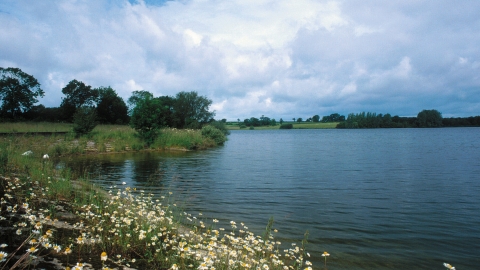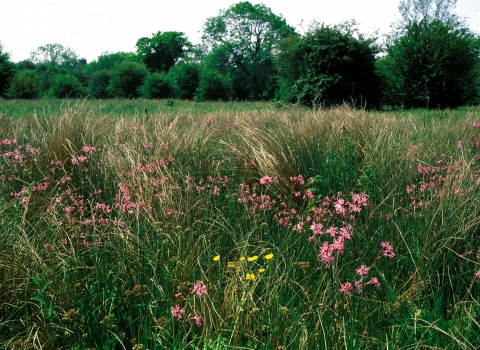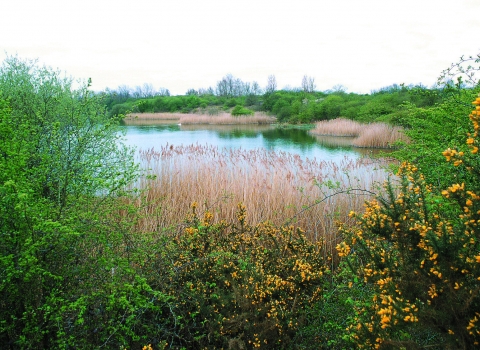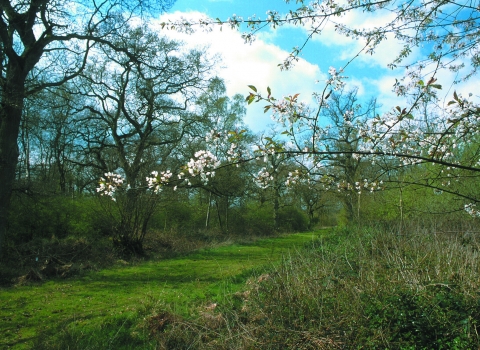
Jim Asher
Foxcote Reservoir
Location
Know before you go
Dogs
When to visit
Opening times
Open all yearBest time to visit
December - AugustAbout the reserve
Stay awhile
Lying in a rolling Buckinghamshire landscape of arable fields, pasture and woodland, Foxcote Reservoir is the kind of place that rewards patient visitors. Created in 1956 by damming a small tributary of the River Great Ouse, this site has become important for the numbers of wintering waterfowl, especially wigeon and coot.
Wintering wildfowl
On a cold winter's day the expanse of open water is likely to hold rafts of wigeon, coot and tufted ducks (it is the male tufted duck that has the bold black and white plumage). These are joined by smaller numbers of goldeneye, goosander, teal, shoveler and occasionally pintail, striking visitors from further afield.
Spring spectacle
Out on the open water great crested grebes may be performing their spring courtship. This involves head-shaking, diving, fluffing out their plumage in the so-called 'cat' display and presenting each other with water plants as they rise from the water breast-to-breast. in the 19th century the fashion for ladies' grebe-feather hats meant that the birds were almost lost to Britain forever; but protection has allowed strong populations to establish.
At the water's edge
Thanks to careful management this healthy reservoir is teeming with aquatic plants and insects. In the summer months the reedy margins are alive with reed buntings and reed warblers which build their nests deep within the reeds.Clinging to swaying reeds, the reed bunting delivers its chirruping song, a simple 'cheep-cheep-cheep-chizzup', before flying jerkily to another clump of reeds. The reed warbler has an attractive, varied song - a continuous and hurried series of notes, some chattering, some musical. Both species feast upon the abundant insects such as craneflies, midges, beetles and dragonflies, flitting across the water. As the summer sun warms the shallows a host of damselflies and dragonflies emerge. Common blue damselflies, tiny bars of electric blue, are particularly noticeable.
A peaceful place
Large numbers of birds come to this reserve because it is beautifully quiet. Any loud noises or sudden movements will disturb the birds, disrupting feeding. The bird hide, which offers a raised view over the reedbeds to the water, is reached by a gentle sloping path and a wooden boardwalk.
Species
- Bittern
- Pochard
- Tufted duck
- Teal
- Wigeon
- Shoveler
- Pintail
- Goldeneye
- Goosander
- Coot
- Great crested grebe
- Little grebe
- Water rail
- Lapwing
- Common tern
- Kingfisher
- Cetti's warbler
- Grey wagtail
- Reed warbler
- Reed bunting
- Hobby
- Common blue damselfly
- Brown hawker
- Migrant hawker
- Marbled white
- Small copper
- Adder's-tongue fern
- European otter
Contact us
Environmental designation

Volunteer with us
Our volunteers help us in so many ways - by working on nature reserves, helping at visitor centres, leading walks, training others and much, much more. Without our volunteers we would not be able to carry out much of our work.
For more information about volunteering for BBOWT, please get in touch with volunteering@bbowt.org.uk



